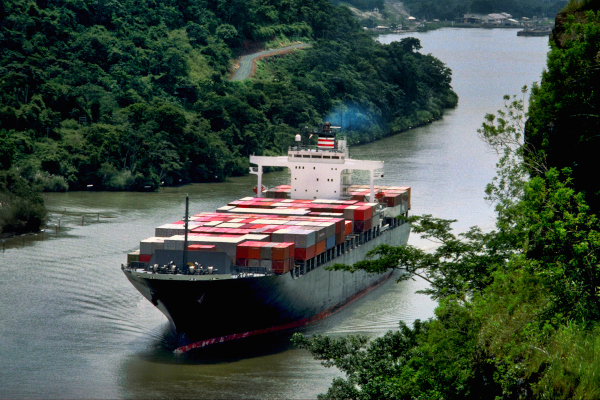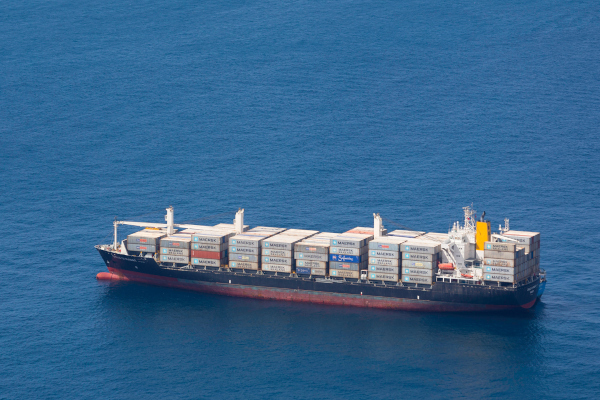Shipping Rates Are on the Rise as Disruptions Continue in Red Sea, Panama Canal
Alternate routes are adding cost, time to global trade
Pressure is high on the global supply chain, which is facing critical climate events and geopolitical crises in the Panama Canal and Red Sea. As the drought at the Panama Canal and new attacks on commercial vessels in the Red Sea by Yemen-based Houthi militants continue to squeeze shipping capacity, supply chain leaders must be better prepared than ever to create resilient and agile global networks.
“The recent Houthi attacks in the Red Sea are a stark reminder of the geopolitical risks facing global trade,” said John Donigian, senior director of supply chain strategyat Moody’s Analytics. “While the immediate attacks were on oil and agricultural shipments, this trade route is utilized for a multitude of products and industries that rely on timely and cost-effective shipping. If attacks become more regular and frequent, the impact on global trade and supply chains could be far-reaching.”
Donigian continued that “the situation further demonstrates the need for businesses to build resilient and flexible supply chains. By leveraging data and technology to gain visibility into supply chain risks, companies can make informed, strategic decisions to stave off operational disruption.”
“While the immediate attacks were on oil and agricultural shipments, this trade route is utilized for a multitude of products and industries that rely on timely and cost-effective shipping. If attacks become more regular and frequent, the impact on global trade and supply chains could be far-reaching.”
And if you’re not already making maritime risk a top priority this year, analyst Matthew York warns you may be falling behind.
“Maritime risk and maritime security are, or should be, top of mind for supply chain leaders today, given the state of the world and the influence that geopolitics has on their day-to-day operations,” said York in a LinkedIn post.
Panama Canal operations remain slow
Drought conditions in the Panama Canal continue to plague shippers and carriers who are seeing increased wait times, costs, and loss of market share. According to York, the six-month drought has reduced daily ship passage from 34-36 ships to 22 (soon to be 24). Research from Flexport indicates a further drop by February 2024, with the average daily transits through the canal decreasing to 18.
The Panama Canal Authority recently reduced the maximum draft of a vessel able to transit the canal from 14.9 meters to 13.4 meters. In response to reduced capacity, ocean carriers have begun looking for alternative routes, including shifting services through the Suez Canal, which extends transit times by at least seven days.
The Alliance, which is made up of container shipping firms Hapag-Lloyd, ONE, and Yang Ming, is already diverting its vessels away from the Panama Canal, with data from Hapag-Lloyd showing that as of Dec. 5, 2023, only one of 24 voyages scheduled to use the Panama Canal followed that route. Of the remainder, 17 are scheduled to travel via the Suez Canal and six via the Cape routes.
As vessel owners look to divert away from the Panama Canal, however, attacks on vessels around Bab al-Mandab (the strait entering the Red Sea onward to the Suez Canal) make shipping via the alternative Suez Canal even riskier. Another option may instead be to ship to the U.S. West Coast and then transport via rail to the East Coast where needed.
New data from S&P Global Market Intelligence shows the process of shifting U.S. imports back to West Coast ports is already underway, having accelerated in November. In the third quarter of 2023, East Coast ports accounted for 46.3% of all containerized products imported, down from 47% a year earlier. In November 2023, that figure fell to 44% compared to 49.2% a year earlier.
Still, rates to less-affected North American ports also remain high, with shipments from Asia to the U.S. East Coast rising 55% to $3,900 per 40-foot container, reported Reuters. West Coast prices increased 63% to more than $2,700.
Dangers in Red Sea leave few options for shippers
Ocean freight rates are only expected to increase as attacks on shipping liners around Bab al-Mandab continue. Most recently, a missile attack and attempted hijacking of a Maersk ship in early January halted plans to restart transit through the Red Sea, a region that accounts for 12% of global shipping passes.
These ongoing attacks have created a dangerous and risky environment to navigate both from an operational and financial standpoint. Though rates are still far below pandemic levels reached in 2021, carriers have been forced to search for alternative routes, driving up costs and shipping times.
As of early January, Reuters reports hundreds of container ships have been rerouted around Africa's southern Cape of Good Hope to avoid the conflict, adding 7 to 20 days to their transit. A report from S&P Global indicates carriers are also considering land routes facilitated by Israel-based logistics technology firm Trucknet Enterprise Ltd working with port operator DP World Limited. The truck route reportedly reduces risks of sailing via the Suez Canal and transiting Bab al-Mandab and cuts transit time by as much as 80%. However, Trucknet’s relations with the Israel Defense Forces and the U.S. Army may bring risks of attacks against the route.
In addition to adding a week or more to transit, Asia-to-North Europe rates more than doubled to above $4,000 per 40-foot container during the week of Jan. 1, with Asia-to-Mediterranean prices reaching $5,175, according to Freightos, a booking and payments platform for international freight. Additionally, Reuters reports some carriers have announced rates above $6,000 per 40-foot container for Mediterranean shipments starting mid-January. Threats of surcharges ranging from $500 to $2,700 per container could drive prices even higher.
“These conditions and events are in addition to the perennially tense East China Sea, Taiwan Strait, Strait of Hormuz, Arctic Circle, and now, escalating naval tensions between Venezuela and UK over Guyana,” added York. “To thrive in 2024, keep your eyes on the horizon, your options open, and be ready to turn the wheel at a moment’s notice. We’re in for a rough one.”
Article Topics
Hapag-Lloyd News & Resources
EU Update 2024: Crises lead to growth Container Shipping Market Facing Major Challenge 2024 Global Logistics Outlook: Crisis mode lingers Maersk and Hapag-Lloyd herald future plans for the ‘Gemini Cooperation’ Shipping Rates Are on the Rise as Disruptions Continue in Red Sea, Panama Canal Maersk continues to pause vessels in Red Sea and Gulf of Aden A.P. Moller-Maersk, Hapag-Lloyd Halt Commercial Shipping in Red Sea More Hapag-LloydLatest in Transportation
A Look at Baltimore’s Key Bridge Collapse—One Month Later Baltimore Continues Bridge Recovery With Opening of New Channel How Shippers Can Prep for Hurricane Season UPS Struggles in First Quarter With Steep Earnings Decline FedEx Announces Plans to Shut Down Four Facilities The Two Most Important Factors in Last-Mile Delivery Most Companies Unprepared For Supply Chain Emergency More TransportationAbout the Author












